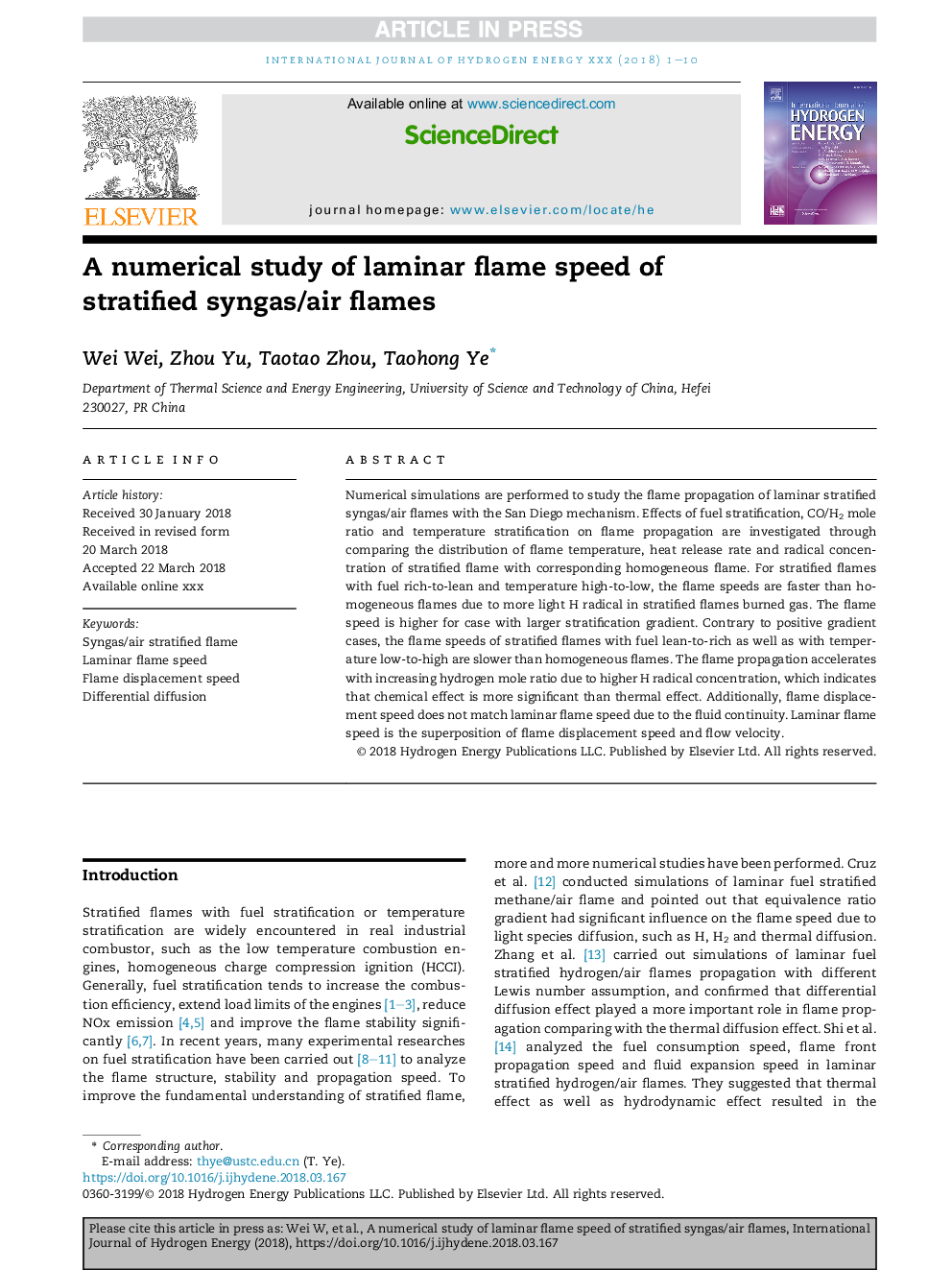| Article ID | Journal | Published Year | Pages | File Type |
|---|---|---|---|---|
| 7706304 | International Journal of Hydrogen Energy | 2018 | 10 Pages |
Abstract
Numerical simulations are performed to study the flame propagation of laminar stratified syngas/air flames with the San Diego mechanism. Effects of fuel stratification, CO/H2 mole ratio and temperature stratification on flame propagation are investigated through comparing the distribution of flame temperature, heat release rate and radical concentration of stratified flame with corresponding homogeneous flame. For stratified flames with fuel rich-to-lean and temperature high-to-low, the flame speeds are faster than homogeneous flames due to more light H radical in stratified flames burned gas. The flame speed is higher for case with larger stratification gradient. Contrary to positive gradient cases, the flame speeds of stratified flames with fuel lean-to-rich as well as with temperature low-to-high are slower than homogeneous flames. The flame propagation accelerates with increasing hydrogen mole ratio due to higher H radical concentration, which indicates that chemical effect is more significant than thermal effect. Additionally, flame displacement speed does not match laminar flame speed due to the fluid continuity. Laminar flame speed is the superposition of flame displacement speed and flow velocity.
Related Topics
Physical Sciences and Engineering
Chemistry
Electrochemistry
Authors
Wei Wei, Zhou Yu, Taotao Zhou, Taohong Ye,
